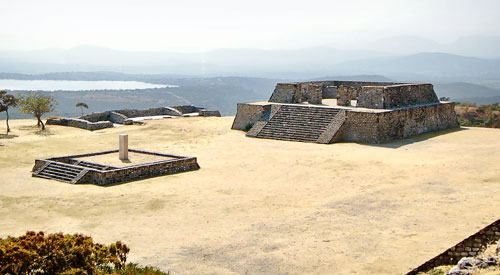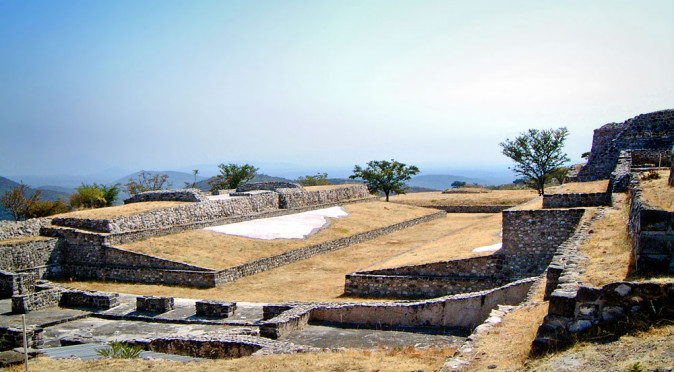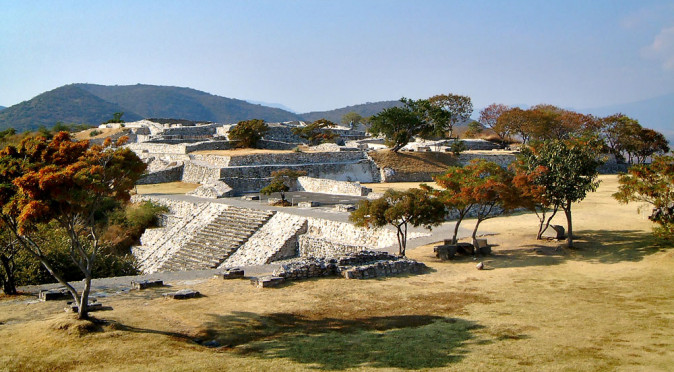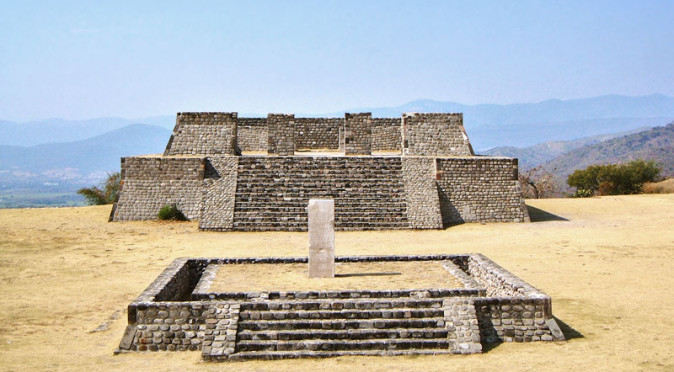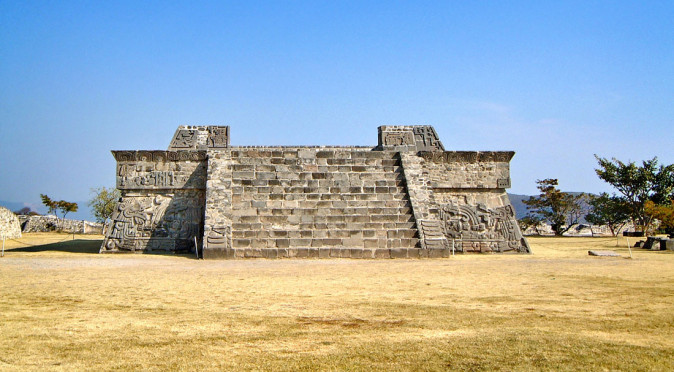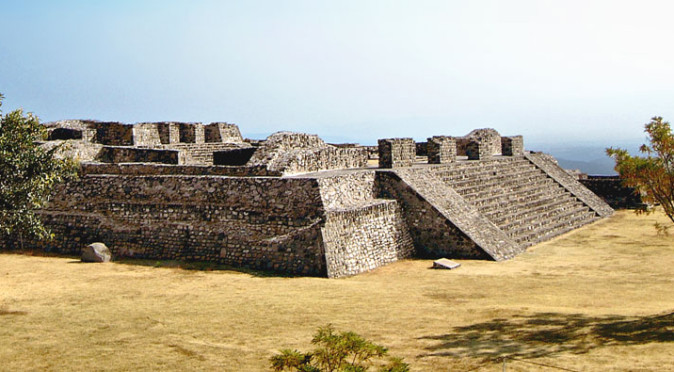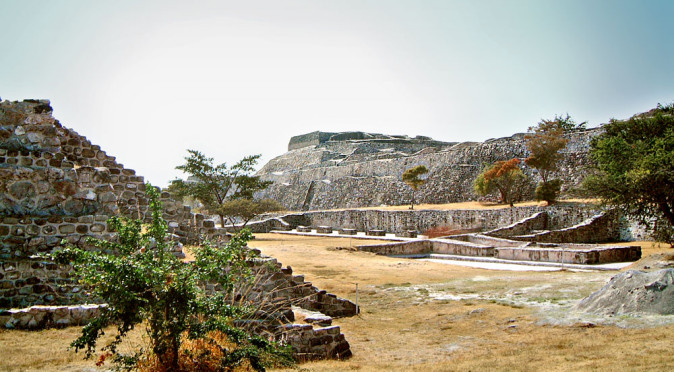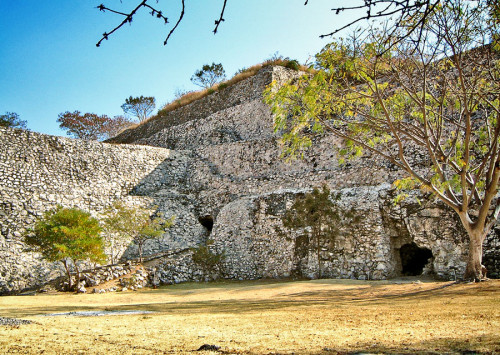
W0094: Observatory EntranceWalking around the northern section of Xochicalco’s lower tier and heading anti-clockwise through the northern ballcourt, you will eventually come to an area where the foundations of the Central Plaza are punctured with cave entrances. These caves expose how the hill was manipulated and dressed with stone to look as though it is an entirely man-made mountain. These caves may have been the reason that this location was chosen, for caves were central to all the religions of Mesoamerica. Caves were seem as primordial places of birth for humankind, which perhaps harks back to the caveman dwellings of prehistory, where Mesoamerican people would have found witnessed ancient and mystical paintings or carvings etched into the walls. For this reason, caves were believed to be the wombs of the mountain gods, who also provided water either through their internal springs or via the clouds that gathered at their peaks. The complete darkness and seemingly infinite passageways also made them portals to the underworld, and places where the dead would re-emerge, born again.
However, one of these entrances leads to a cave that was possibly man-made and certainly adapted to allow the sun to enter. By manipulating a crack leading up to the floor of the Central Plaza above, the people of Xochicalco created an incredibly restrictive zenith tube measuring 8.7m in length, that allow the sun to cast a brilliant beam on the floor when it moved directly overhead on its transit north, on the 14th/15th May and again on its way back south, on the 28th/29th July. Surrounded by sophisticated temple alignments, and panoramic views of the horizons, there seems little need to manipulate a cave to identify the zenith, but there are three interesting phenomenon that occur only within the cave: firstly, by reducing the shaft entrance to little more than a pinprick, it has been demonstrated that the zenith tube will work as a camera-obscura and allow detailed observation of the sun and its physical features, such as solar flares and sun spots; secondly, as the sun moves west overhead, the round beam of light moves east upon the cave floor, as if being reborn through the dark underworld; thirdly, direct light only enters the cave for 105 days, between the 30th April and the 15th August, which leaves 260 days of darkness – the exact number of days in the sacred-calendar. The cave was apparently plastered and painted in black, yellow and red – the colours of the sun – which leaves little doubt that the observatory was designed to play an important role in the religious calendar and that it was probably devoted to rituals surrounding the rebirth of the sun.

